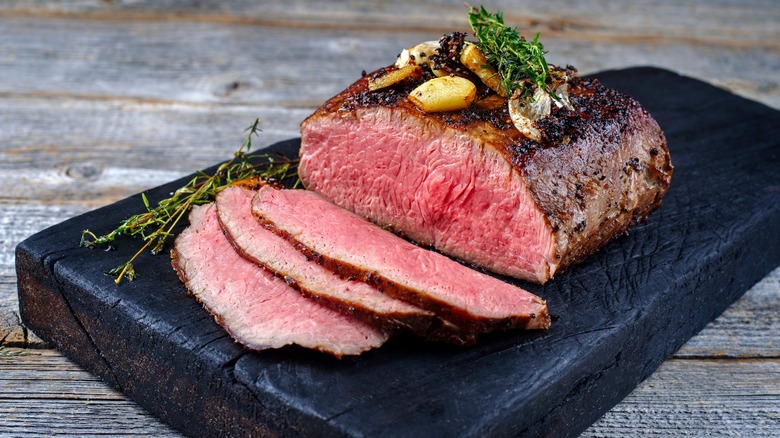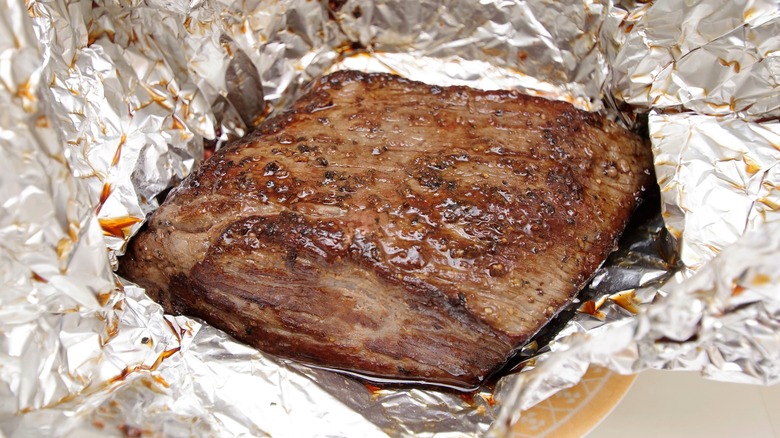How To Reheat Roast Beef So It Stays Super Tender
For some folks, myself included, roast beef is generally a one-and-done dish because it can be challenging to revive it to its former state of tender glory the next day. But apparently, I've been missing out on enjoying leftover roast beef sandwiches at home way too often. Marissa Stevens is a recipe developer and founder of Pinch and Swirl, and she indicated that when reheated correctly, leftover roast beef can be just as tender and flavorful as the first time it was served.
Let's get the obvious out of the way. "Microwaves are a last resort — they're unpredictable with proteins," Stevens told The Takeout. While a microwave does a great job of defrosting meat, it tends to suck the moisture out of food as it heats it from the inside out. When moisture is removed, meat can become tough and chewy — the last thing you want your roast beef to be.
Stevens suggests opting for another well-used kitchen appliance. "Low and slow in the oven is my preferred method," she said. Roast beef is frequently made using lean cuts like round primal – the same cut of beef you need to make your own Arby's-style sandwich. Lacking the fatty marbling of something more along the lines of a ribeye, lean protein is difficult to keep moist even when first cooked. Rushing a reheat is a surefire way to dry out whatever moisture it had to begin with.
Reheating roast beef is all about retaining moisture
"Low and slow" is a fairly straightforward concept, but the term is also a bit subjective. What temperature is "low," and how long will it take for the roast beef to heat up? Stevens gave some more precise details about how hot an oven should be when reheating roast beef, and she also shared a genius trick to ensure the meat doesn't become dry while patiently waiting for it to warm up.
Instead of relying on the moisture in the roast beef to stay put, she suggested adding your own. "I wrap sliced beef in foil with a splash of broth or pan juices and warm it at 275 to 300 degrees Fahrenheit until just heated through," Stevens said. "This keeps it moist and avoids the toughness that comes from fast reheating." By fashioning an aluminum foil pocket with added liquid, the oven gently steams the roast beef, guaranteeing it won't dry out. If there are any holes in the foil pocket, steam can slip out, resulting in a less tender outcome — so make sure to close it tight.
The exact timing depends on the amount of protein being reheated and your desired level of doneness. Typically, one pound will take 15 to 20 minutes to warm up, but it's best to use a meat thermometer to make sure it comes out how you like it. You can accelerate the process by taking the roast beef out of the fridge while the oven preheats so it loses some of its chill and won't need to be in the heat for quite as long.

